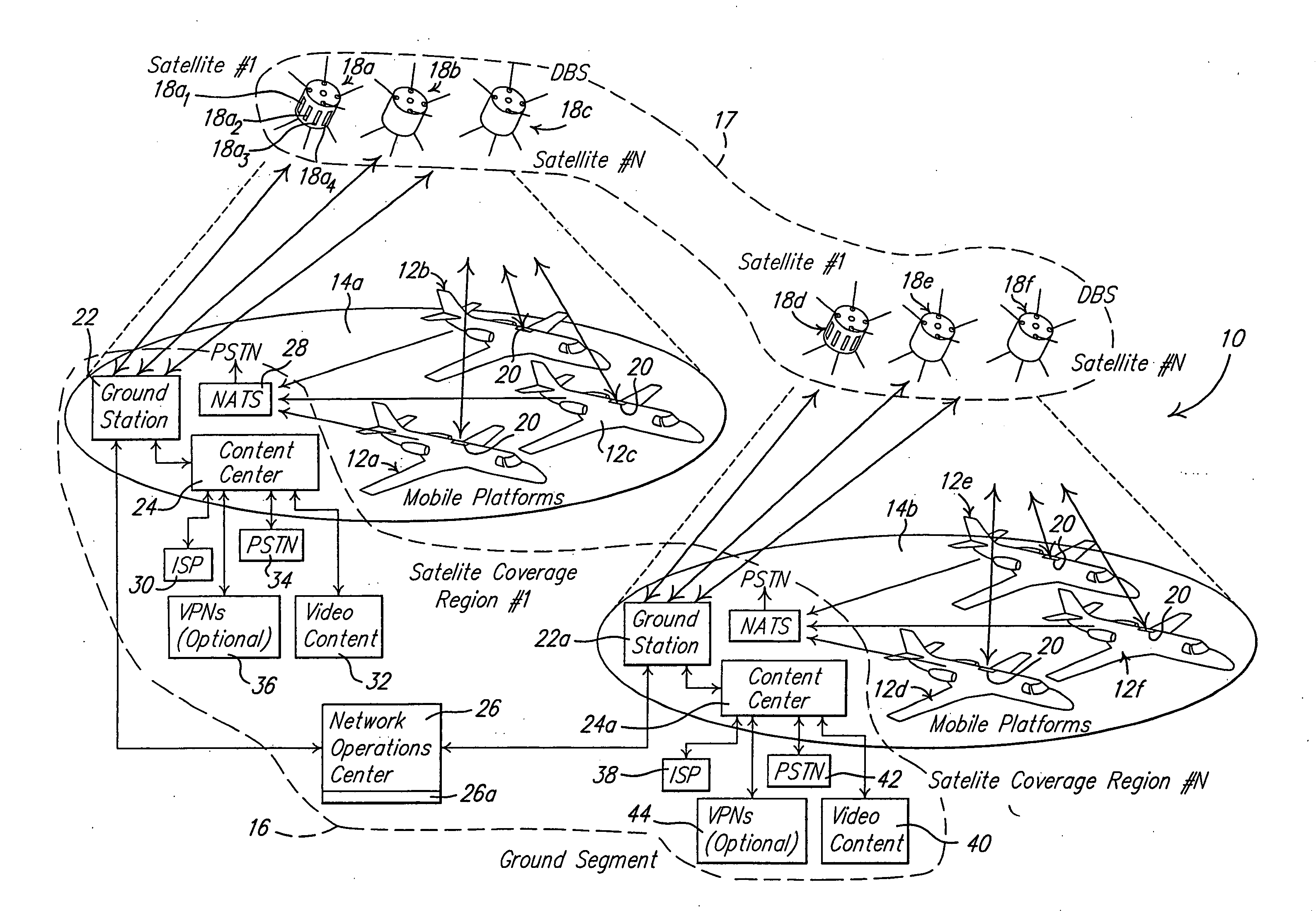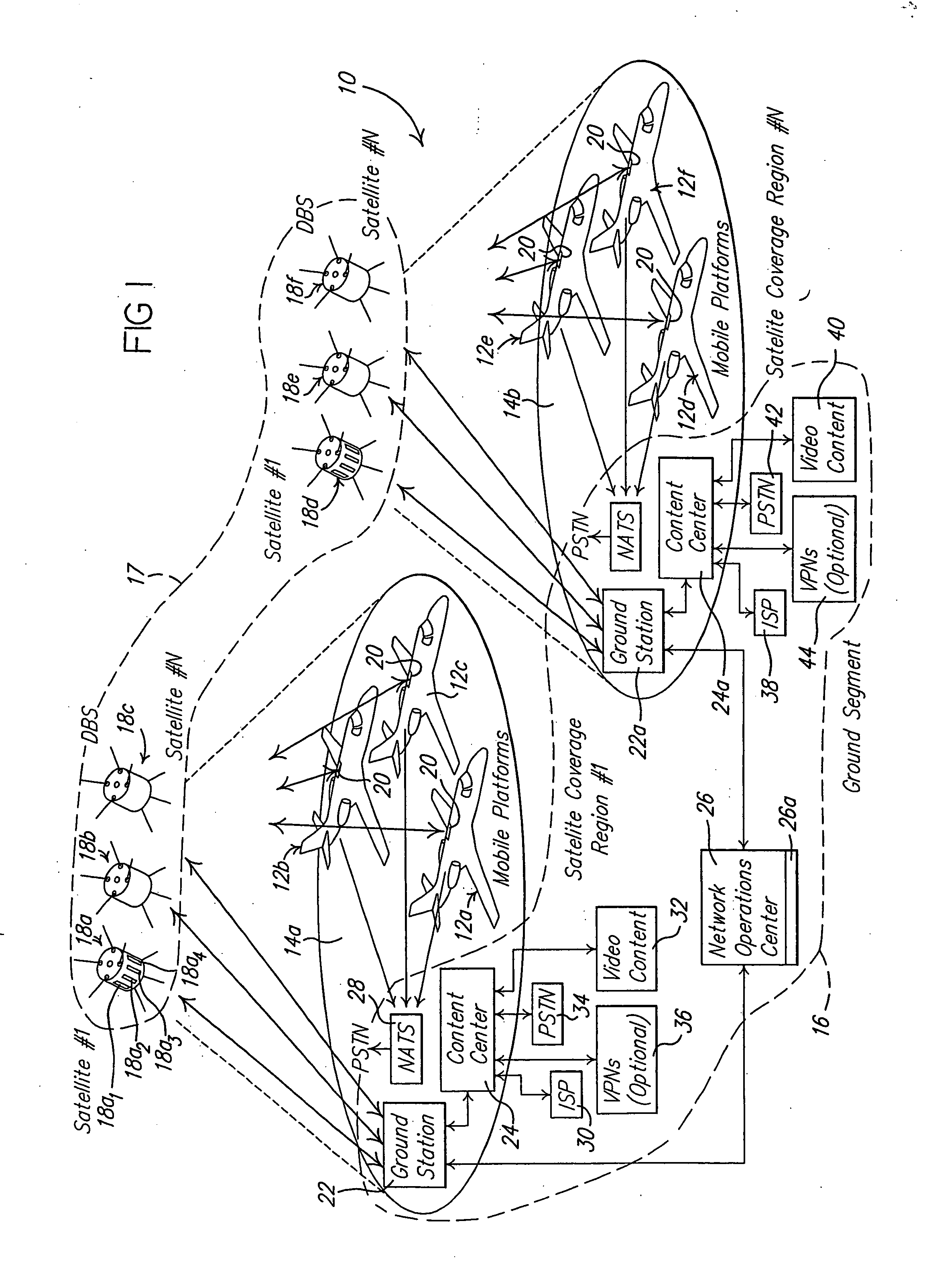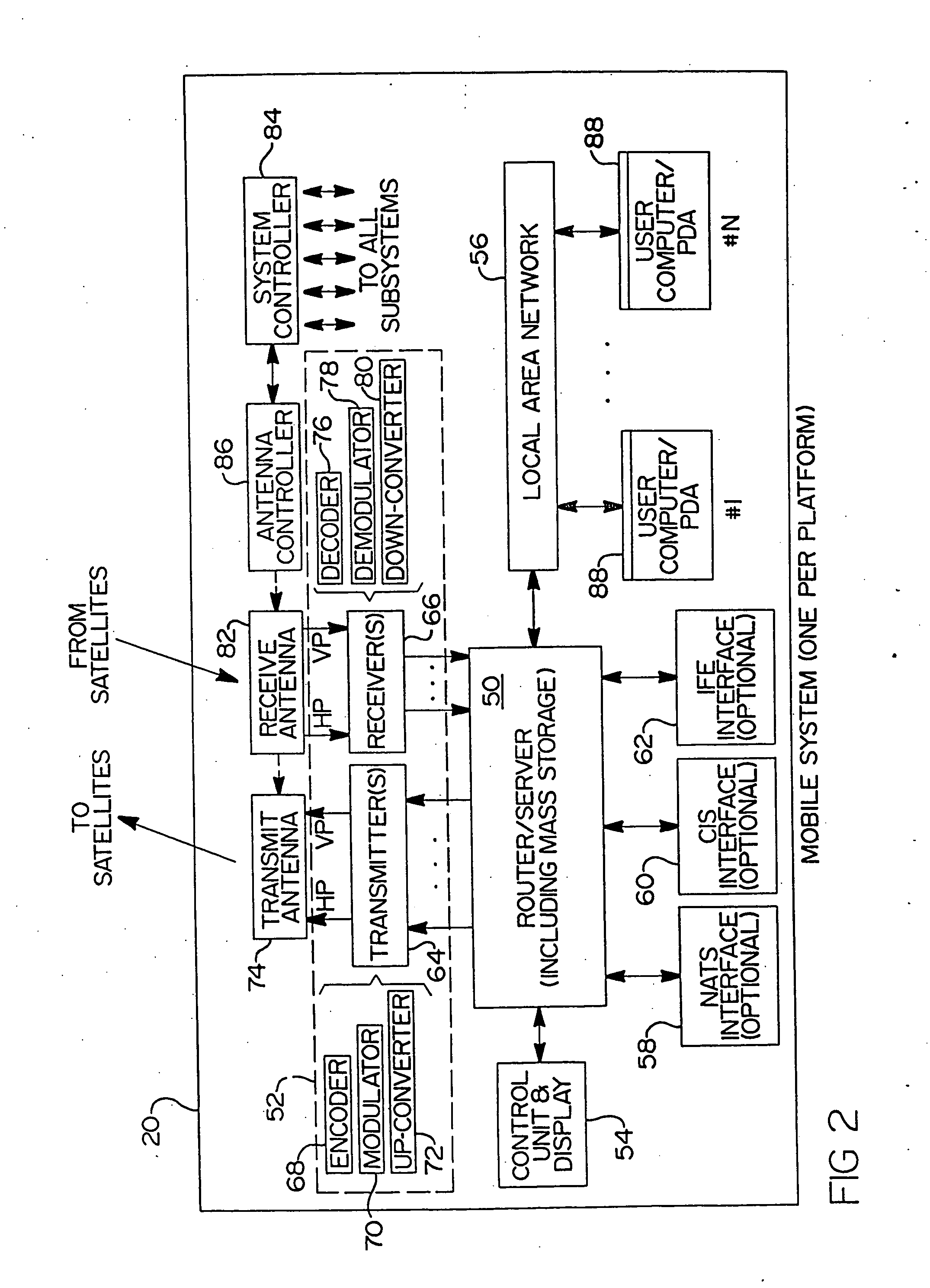Return link design for PSD limited mobile satellite communication systems
a technology of mobile satellite communication and return link, which is applied in the direction of transmission monitoring, wireless commuication services, power management, etc., can solve the problems of society and economy, inability to readily provide mobile platform users, and inability to quickly determine the power level of the need, so as to reduce the bandwidth of transmission and improve the power level of the signal. , the effect of quick determination of the power level
- Summary
- Abstract
- Description
- Claims
- Application Information
AI Technical Summary
Benefits of technology
Problems solved by technology
Method used
Image
Examples
Embodiment Construction
[0055] Referring to FIG. 1, there is shown a system 10 in accordance with a preferred embodiment of the present invention for providing data content to and from a plurality of moving platforms 12a-12f in one or more distinct coverage regions 14a and 14b. The system 10 generally comprises a ground segment 16, a plurality of satellites 18a-18f forming a space segment 17, and a mobile system 20 disposed on each moving platform 12. The moving platforms could comprise aircraft, cruise ships or any other moving vehicle. Thus, the illustration of the moving platforms 12 as aircraft in the figures herein and the reference to the mobile platforms as aircraft throughout the following description should be understood as exemplary only, and not be construed as limiting the applicability of the system 10 to only aircraft.
[0056] The space segment 17 may include any number of satellites 18 in each coverage region 14a and 14b needed to provide coverage for each region. Satellites 18a, 18b, 18d and...
PUM
 Login to View More
Login to View More Abstract
Description
Claims
Application Information
 Login to View More
Login to View More - R&D
- Intellectual Property
- Life Sciences
- Materials
- Tech Scout
- Unparalleled Data Quality
- Higher Quality Content
- 60% Fewer Hallucinations
Browse by: Latest US Patents, China's latest patents, Technical Efficacy Thesaurus, Application Domain, Technology Topic, Popular Technical Reports.
© 2025 PatSnap. All rights reserved.Legal|Privacy policy|Modern Slavery Act Transparency Statement|Sitemap|About US| Contact US: help@patsnap.com



